The Lost Lingo of New York City’s Soda Jerks
Anyone for a “glob”?
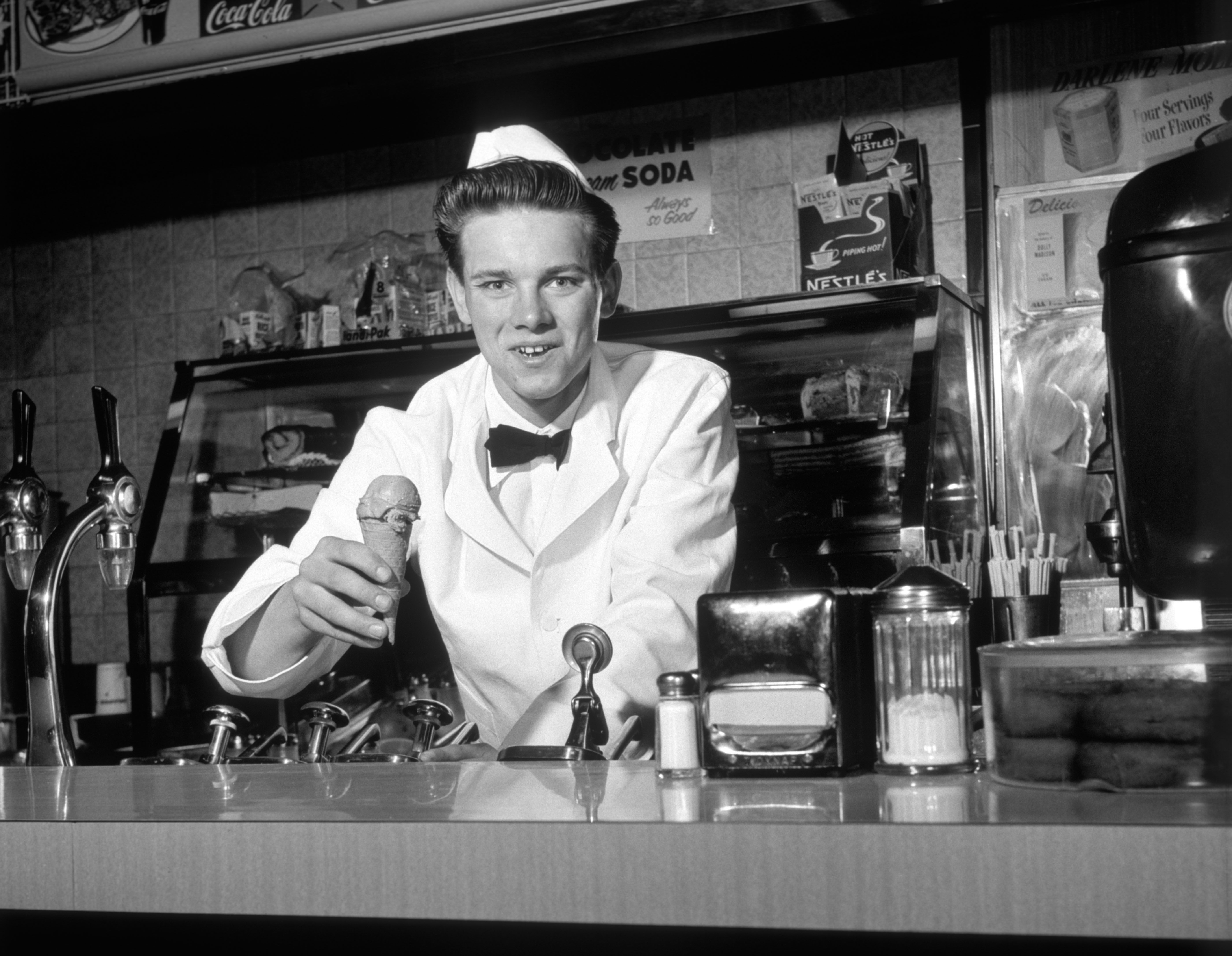
Throughout the 1940s, during the post-dinner lull, students and staff at Columbia University would make a beeline for Friedgen’s Pharmacy up on Amsterdam Avenue. There, they’d tuck in to strawberry floats, marshmallow sundaes, and chocolate malts, all served up by Thomas Foppiano, “a small, squat, balding man who likes to laugh,” the New York Times reported.
Foppiano was a “soda jerk,” one of half a million employed at tens of thousands of soda fountains across the United States in the 1930s and 1940s. They had white coats, swift fingers, and even swifter tongues—indeed, their linguistic concoctions were as much of a draw as the sweet treats they served up. Foppiano himself, the paper reported, got a special shout-out in a university English course on American colloquialism after a professor ordered a large cherry coke and heard him shout back: “Stretch one, paint it red!”
Soda jerks became known across the country for this kind of esoteric slang. They were often virtuosic wordsmiths, with a gift for puns and riffs. And, at a time when the United States was nuts for all things ice-cream, they were at once “consummate showmen, innovators, and freelance linguists of the drugstore stage,” writes Michael Karl Witzel in The American Drive-In. “America’s soda jerk became the pop culture star of the Gilded Age.”
Throughout the 1930s, Americans were eating more ice-cream than ever before: In 1938 alone, the New York Times reported, Americans consumed some 275,000,000 gallons of frozen custard: “We now have the peculiar blessing of a national ice-cream week, ice-cream murders, and a dog ice-cream-eating championship, last won by a pup called Shiver II.”
Nowhere was the cold stuff more popular than in New York City. That year, 20,000,000 gallons of vanilla, chocolate, and strawberry glugged down the gullets of New Yorkers, served up at drugstores from Mott Street to Harlem. Customers would sit on swiveling stools and order serving after serving of ice-cream sodas. (Despite a gamut of flavors, consumers tended toward the conservative: About four dishes out of every ten were vanilla. About seven out of ten were vanilla, chocolate, or strawberry.)
Behind the counter were the soda jerks. Their responsibilities were many—breaking and draining eggs with one hand, carving chicken, remembering orders, pulling the correct spigots and spindles on the drugstore soda fountain. But most of all, the Times reported, “the prime requisite of their station is the ability to bandy words.”
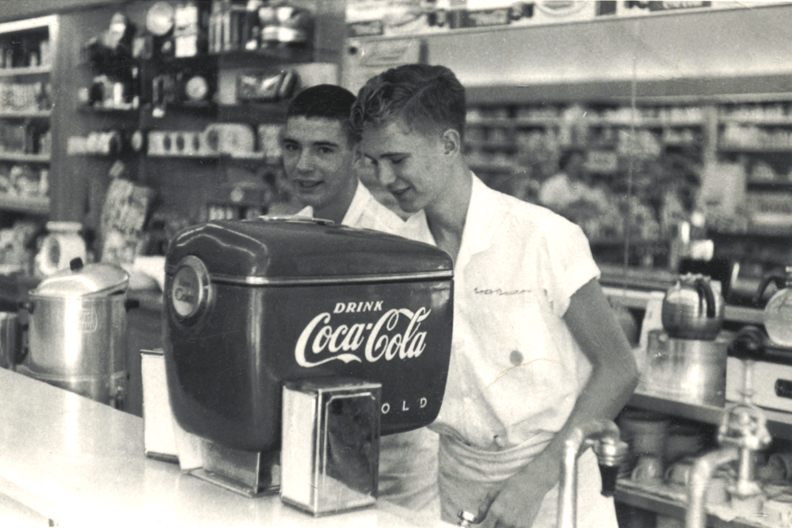
In 1936, English professor Harold W. Bentley conducted a full-scale investigation into the cabalistic mumbo-jumbo of these young New Yorkers, publishing his findings in the journal American Speech. They were so semantically inventive, he wrote, that they had become a tourist destination in their own right, skillfully “serving colorfully named concoctions [and] providing an attraction much stronger than stone and concrete piled high. To foreigners in search of local American color, the soda fountains are as good as made to order.” (In fact, soda jerks were slinging lingo all over the country—though many of the terms Bentley described are specific to the Big Apple.)
There was a competitive edge to it too, Bentley explained: “The bright boys behind the marble counters have extended themselves to outdo the other fellow with fantastic, grotesque, or witty labels for the food combinations from the kitchen or the refreshments spouting out of those fascinating faucets which decorate the bar.”
An order of a simple float might yield a shout of “Burn it and let it swim!” A more complex chocolate malted milk with chocolate ice cream: “Burn one all the way.” If you nixed the ice cream and added an egg, your server would “twist it, choke it, and make it cackle.” Coca-Cola flavored with cherry might be “Shoot one in the red,” or the steamier “Make it virtue.” Drinks without ice “held the hail.” Big drinks were “stretched”; small ones were “short.”
The term used in one drugstore might not hold in another. In one soda fountain Bentley visited, an order of “Black and white” meant a chocolate soda with vanilla ice cream. But in another, it signified black coffee with cream—and in yet another, a chocolate malted milk. A simple glass of milk might variously be called “cow juice,” “bovine extract,” or “canned cow,” while water went by everything from “aqua pura” to “city cocktail” to the deeply unappetizing “Hudson River ale.”
Many of these terms were used in only one soda fountain—or two at the most, with terms swapped around and mixed up almost as vigorously as the drinks they described. There was a certain amount of pressure to keep them up-to-date: An order of five small scoops of vanilla ice-cream topped with whipped cream, a maraschino cherry, and crushed fruit had the nickname “The Dionne Surprise,” for the famous Canadian quintuplets born in 1934.
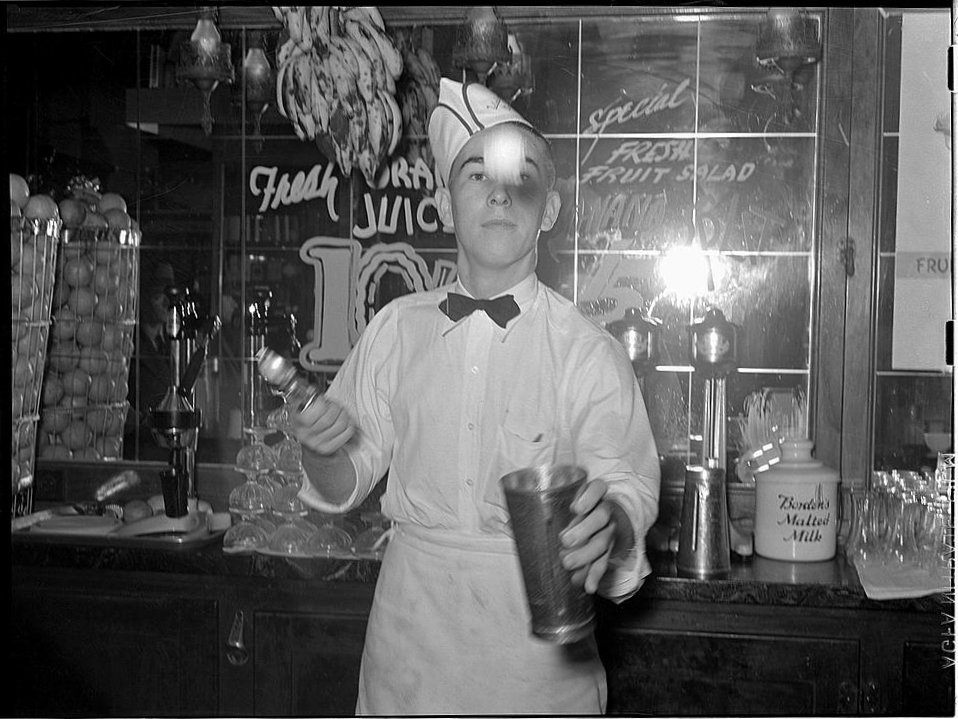
Often, the terms were a cocktail of performance and posturing. They were something for tourists to go out of their way for, and a distraction for Times Square showgirls out for a breather between rehearsals, as they sat on high red upholstered stools and nursed dishes of vanilla ice-cream. There was also something compelling about a kind of indecipherable secret language, where guessable terms (a “Traffic Light Sundae” was three scoops of vanilla, with a cherry of red, white, or green on each) mingled with cryptic ones (anyone for a “Brown Derby”?).
On occasion, the code had a simple, practical purpose. That might be in protecting the privacy of the customer: The name of an order spiked with the laxative magnesium citrate would include Mary Garden “because it makes you sing.” If a customer left without paying, whether by accident or otherwise, it was often easier to shout “95!” than to explain what had happened. “99!” denoted the presence of the big boss or an inspector (soda fountains were notoriously unhygienic and tended not to use soap when washing dishes).
But by the mid-1930s, Bentley observed, the hijinks and fast talk of the soda jerk were already on the wane. Whether or not the audience appreciated it, employers seem to have found the volleying calls of “belch water” and “dog and maggot!” hard to stomach. “Indeed,” he wrote, “the practice is frowned down in many fountains, particularly those owned or operated by large chain organizations or by department stores.”
The practice clung on for at least another couple of decades, but as the men got older, they moved on to higher paying jobs in bonds or sales, and gradually, the slang was mostly, if not entirely, forgotten. Meanwhile, national fast food chains replaced mom-and-pop diners and soda fountain drugstores. But little remnants of soda jerk lingo still persist in the English language—so spare a thought for their razzle-dazzle next time you’re offered a hot cup of java, or decide to indulge in an egg cream.
All Black: Chocolate soda with chocolate ice cream.
Add Another: Coffee.
Baby: Glass of fresh milk.
Black Bottom: Chocolate sundae with chocolate syrup.
Black Cow: Root beer.
C. O. Cocktail: Castor oil prepared in soda.
Canary Island Special: Vanilla soda with chocolate cream.
Choc In: Chocolate soda.
Choker Holes: Doughnuts.
Coffee And: Cup of coffee and cake.
Cowcumber: Pickle.
Draw Some Mud: Coffee.
Eighty-Seven and a Half: Girl at table with legs conspicuously crossed or otherwise attractive.
Give: Large glass of fresh milk.
Glob: Plain sundae.
In the Hay: Strawberry milkshake.
Maiden’s Delight: Cherries.
Mug of Murk: Cup of coffee without cream.
Ninety-Five: Customer walking out without paying.
Oh Gee: Orangeade.
One On The House: Water.
Pop Boy: Soda man who doesn’t know his business.
Rhinelander: Chocolate soda with vanilla ice cream.
Saltwater Man: Ice cream mixer.
Scandal Soup: Tea.
Yum-Yum: Sugar.
Gastro Obscura covers the world’s most wondrous food and drink.
Sign up for our regular newsletter.





























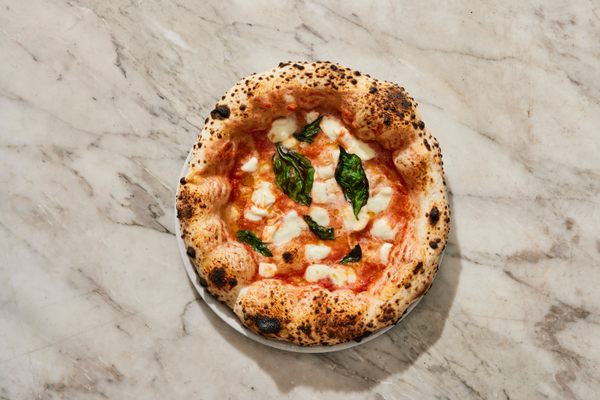


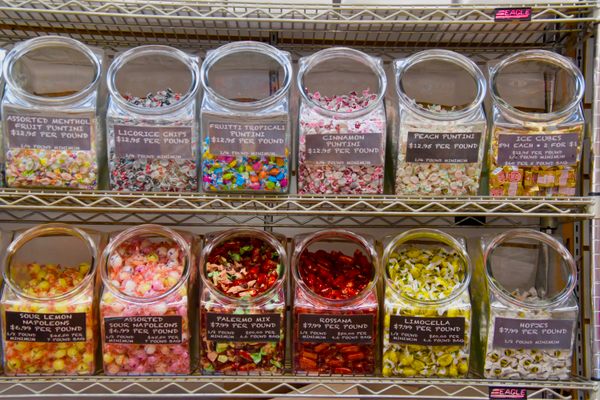


Follow us on Twitter to get the latest on the world's hidden wonders.
Like us on Facebook to get the latest on the world's hidden wonders.
Follow us on Twitter Like us on Facebook